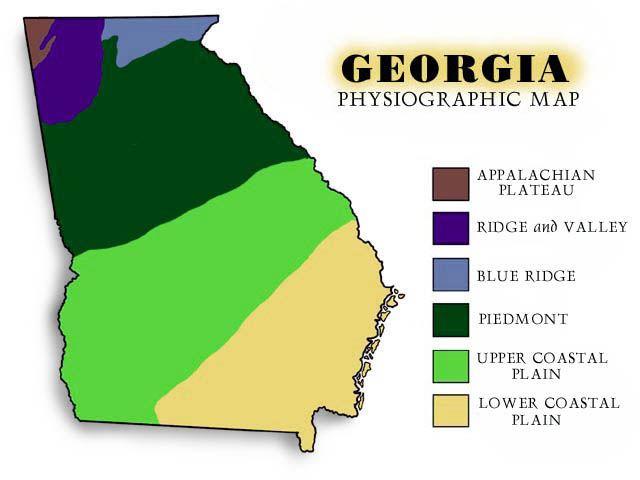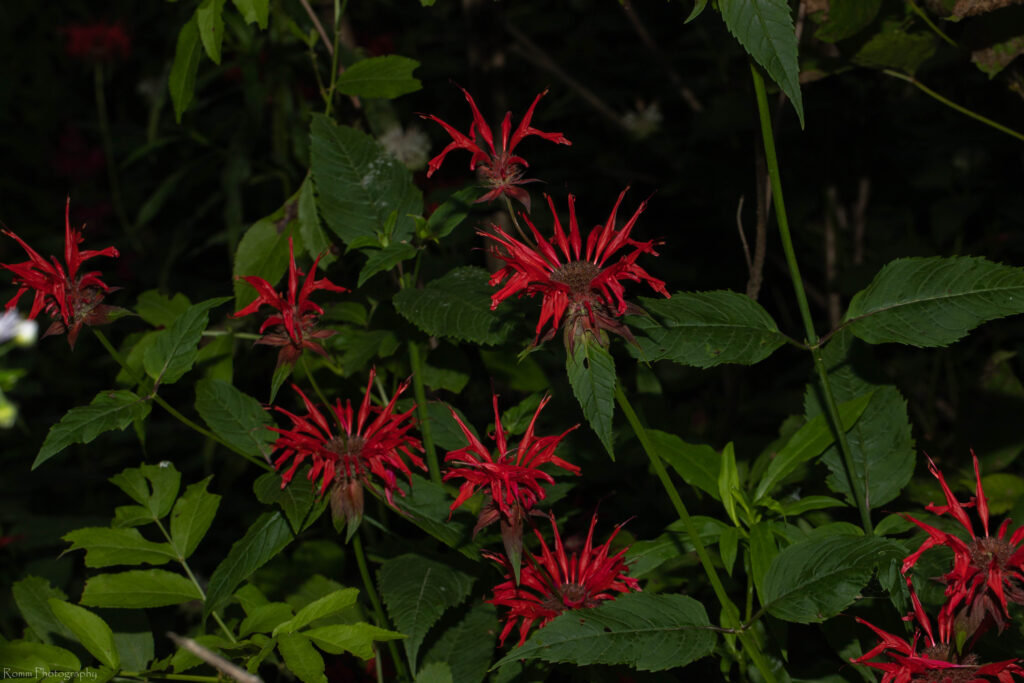
For gardeners trying to decide what plants to utilize, the first thing they usually look to is the gardening zone they are in. Generally speaking, the basis for the traditional gardening zones is the temperature range of the delineated area – this is fine for a traditional garden setting, but doesn’t quite work when you shift the discussion to utilizing native plants on your landscape. Our native species are not adapted to gardening zones based on a temperature gradient, they are adapted to soil types and hydrologic conditions, which have their basis in the underlying geology of a particular area. Think about the state of Georgia and the map above. Think about the transition from the red clay of the Piedmont into the sandy substrates of the Coastal Plain, to the Blue Ridge of the northeast and karst sedimentary deposits of the Ridge and Valley, and you’ll start to better understand the parameters that dictate why we see our native plant species where we do. This is not to say that temperature and regional climates do not dictate plant communities, because they certainly do (relic populations on mountaintops in the Blue Ridge come to mind), but rather to emphasize that an understanding of the underlying geology of your area should be the primary driver that dictates your native plant selection.
The best way to illustrate this is simple – ditch the gardening zones in favor of range maps for the species you want to utilize. The USDA maintains an excellent plant database, complete with range maps for species across the country. You could even take this a step further and say ditch your typical map that shows city/county/state designations in favor of a geographic map showing ecoregions associated with the underlying geology. Plants and wildlife do not play by our rules – where they live is dictated by geology and associated natural communities, not county lines.
Looking at the range maps of different plant species can teach us many things about a particular plant we are looking at: the physiographic region they occupy, their range beyond your own state, and even gaps in a distribution where a plant may have been likely to occur but was never documented prior to development. You will start to see trends in different range maps – some species, for example, just barely touch into the Ridge and Valley of northwest Georgia, but looking beyond Georgia they may have an extensive range going north into the Midwest, a strong indication that there is a geological barrier that makes the other ecoregions of Georgia unsuitable for that species. The same is true for many coastal plain species, with ranges spanning across several states in the southeastern United States, but not present in the adjacent Piedmont because the underlying geology is unsuitable for those species to exist. For those of us in the Piedmont (it is the Georgia Piedmont Chapter’s namesake, after all) we live in an interesting bubble – something of a “transition” between the Coastal Plain and the Appalachian Mountains – and get a lot of overlap.

How can you know for sure that a plant you want to utilize is truly native to your region? Check the range map of the species, and compare it to the physiographic region you are trying to plant in. This will give you an excellent starting point – something of a baseline – to start selecting appropriate species for your area. We could get more specific and get into the different natural communities within your physiographic region (wooded uplands, grasslands, granite outcrops, riparian areas, ephemeral wetlands, etc.), but that is a discussion for another day. For now, just developing the understanding that plants communities are largely dictated by the underlying geology of your area is the take is what’s important.
Now, for the question a lot of folks are probably asking: why does this even matter? If it’s native to Georgia, it’s native to Georgia, right? Let’s circle back to the scenario above, where we replaced a classic map – one filled with cities, roads, and state lines – with a map displaying physiographic regions. “Georgia” is not a physiographic region. “The United States” is not a physiographic region. These are boundaries created by people, not indicators of how and why a certain plant community can exist in a particular area. More specifically, the plants and natural communities that exist in a given area are able to do so because they have evolved over millions of years under the conditions created from a combination of geology, climate, and disturbance (more on that another day).
To take it a step further, another question must be asked: why do people want to plant native species? Usually the answer is to help wildlife in some form or fashion – a small pollinator garden, creating habitat for different bird species, even managing for large mammals and game species on larger properties. Plant communities have evolved to exist within certain geological and climatic parameters, and wildlife has evolved to exist within certain plant communities. Essentially, wildlife distributions are dictated by geology as well.
In order to generate the greatest benefit for wildlife, we should be utilizing plant species that have evolved alongside our native wildlife species. This is especially true for insects that have highly specialized relationships with specific plant species – evolutionary connections that have been forged for millions of years. As a general example, if a plant is only native to the Ridge and Valley in Georgia, and it has a specific pollinator that is also only native to the Ridge and Valley in Georgia, planting it in the Piedmont is not doing much to benefit either. This concept applies to any form of reintroduction, plant or wildlife – you would not try to introduce a population of Eastern Indigo Snakes to the Blue Ridge any more than you would try to introduce a Ruffed Grouse to a Coastal Plain sand ridge.
There are plenty of generalist species that transcend these geological barriers and exist in multiple physiographic regions, but that is the point – natural distributions, as best as we can understand them (historical data is not always available, is the only reason I add that qualifier), should be the basis for determining whether or not a plant is truly native in a given location. For species restricted to specific physiographic regions – or even to specific natural communities within a region – it is best to try to keep them within that range. There are quite a few nurseries, run by highly reputable and knowledgeable people, selling plants that have ranges well outside of the physiographic region they are selling plants in. Doing your own research on where plants naturally occur can remove a lot of confusion.

Photo credit Brian Romm
Is planting something that is native to a different physiographic region the end of the world? Oftentimes, probably not, but you never know where the next invasive species is going to pop up – we have plant species that are becoming invasive in Georgia that are historically native to southern Florida. I would not consider that a benefit to wildlife or our natural communities. Once a species becomes invasive in an area, it does not matter if it came from Asia or an adjacent physiographic region.
Wait, didn’t we just say that plant communities exist in areas to which they have evolved to a specific set of conditions? How can a species be invasive to an area if it has evolved to exist under those conditions? The answer requires us to bring wildlife communities back into the discussion. Invasive species take over areas because they evolved under similar site conditions, but are now in an area where there are no wildlife species that have evolved with the invader. Simply put, they are in an area where the physical conditions of the site are suitable for growth, but have no predators to keep them in check. This is a very simple explanation of a complicated issue, but I’m sure we will have another discussion about invasive species.
In summary, selecting appropriate plants for your physiographic region (and the various habitat types within those regions) is important because they have evolved to exist within a specific set of physical parameters, and native wildlife has evolved to exist alongside specific plant communities. To put it bluntly, if you are using plant material that would not have historically been present in your area, then you are not planting native plants. Though this is oftentimes not doing any harm, it probably isn’t doing much good either. Forget about traditional gardening zones – your gardening zone is your physiographic region.
